
04 Sep 45th Annual Telluride Film Fest: “Delighted” (Again)
Many festivals pet their celebrities. Not Telluride. That’s because the Telluride Film Fest has never been a booty call, swag grab or a giant photo op. Here you find no big-budget pap; no paparazzi either. The Telluride Film Fest is red meat for cinephiles only – stars, writers, directors, producers, plain folks who like watching, all of whom share a love of the art, not the business, of filmmaking. Every year – and 2018 is no exception – the Festival directors, currently Julie Huntsinger and co-founder Tom Luddy, (who was sorely missed this year) – manage to pick movies that remind us why we are willing to hole up in dark theaters when the sun is shining outside. Why we are willing to out ourselves as voyeurs. Why we love movies in the first place: to be mesmerized, enthralled – or, in the words of “Free Solo’s” Alex Honnold, “delighted.” For all those reasons and more, the Telluride Film Festival is the “white crow” among film festivals, non-conforming in its ways right down to keeping its picks a secret until opening day. Truth be told, from the get-go, Telluride Film Festival founders and directors emeriti, Bill and Stella Pence, and now Luddy and Huntsinger developed their reputations for integrity by turning their backs on The Industry, Hollywood shorthand for special effects, mind-numbing plots, testosterone-fueled blood-and-gore fests, blockbusters, crowd-pleasing franchises, bad guesses, and good luck. But that pointed exclusion does not include films that could become Hollywood blockbusters, ribbons of dreams that feature great writing, bravura acting, and a colorful parade of complicated characters and their struggles with sex, money, social upheaval, and the many and varied treacheries of the human heart. Films such as “Roma,” “Cold War,” “The Shoplifters,” “The White Crow,” “The Old Man and The Gun,” “The Favourite,” “Birds of Passage,” “Boy Erased,” “Free Solo,” “Meeting Gorbachev” and “First Man,” all of which were among the engaging features and docs curated for the 45th annual gathering of cinephiles.

All in the Family:
It’s all there in luminous black and white, an intimate portrait of the artist as a young man, which, according to its “author,” 2018 Telluride Film Festival tributee Alfonso Cuaron, is based on his understanding today of the boy he was back then.
His cine-memoir “Roma” largely unfolds through the eyes of Cleo, Cuaron’s nanny, a young indigenous woman and domestic worker in the middle-class neighborhood neighborhood in Mexico City that gives the film its name.

The beautiful love letter to his surrogate mom was clearly shot through the lens of a camera ravenous for emotional depth. Cuaron’s meticulously detailed images on the screen result in an unforgettable study of a woman from a disadvantaged social background in the context of a world rife with issues of domestic strife, class and race.
We can think of few other portraits, short of a Rembrandt, that give so strong a sense of being handed a soul – including Cuaron’s mother, a beautiful, bright scientist who nearly lost herself in the maw of an oppressive marriage.
Writing for The Hollywood Reporter, critic Tom McCarthy described “Roma” as a film with “an immersive bath in some of the most luxuriantly beautiful black-and-white images you’ve ever seen.” He labeled Cuarón’s direction “the work of a great filmmaker who exhibits absolute control and confidence in what he’s doing.”
Years ago, Telluride Film Festival co-founder Bill Pence told us “We don’t go into our festivals thinking themes. Themes emerge.” A 2018 leitmotif was “family,” a single word with a number of different meanings.
One definition of family is “a fundamental social group in society typically consisting of one or two parents and their children.”
Another is “Two or more people who share goals and values, have long-term commitments to one another and reside usually in the same dwelling.”
At the 45th annual Telluride Film Festival, both definitions apply. Families differ in terms of economic, cultural, social and other facets, but what every one has in common is the fact that the people who describe a social unit using that term are making clear that those who fall inside their circle are very important in some way to them.
Welcome to the world of another Film Fest favorite, the very buzzy “Shoplifters,” winner of the Cannes Film Festival’s top prize and director Hirokazu Kore-eda’s shining example of an unconventional family.

After one of their shoplifting sessions, Osamu and his son come across a little girl in the freezing cold. At first reluctant to shelter the girl, Osamu’s wife agrees to take care of her after learning of the hardships she faces. Although the family is poor, barely making enough money to survive through petty crime, they seem to live happily together until an unforeseen incident reveals hidden secrets, testing the bonds that unite them.
“Shoplifters” is a gentle, spare, compelling, insightful, funny drama about The Other, an erstaz family of thieves living in abject poverty on the margins of society. Kore-eda, who seems to have taken a vow of obedience to awareness, handles its subject matter – sex, lies, love, puberty, death, outsiders, family dynamics – with an understated honesty that gives the movie its gut-wrenching emotional depth and power. No need to shout when you can get your point across with a whisper.
Look for Oscar nods for both films.
Joel Edgerton’s masterful “Boy Erased” is based on a gut-punch of a memoir by Garrard Conley about so-called “conversion therapy,” which translates into the soul murder of gay men.
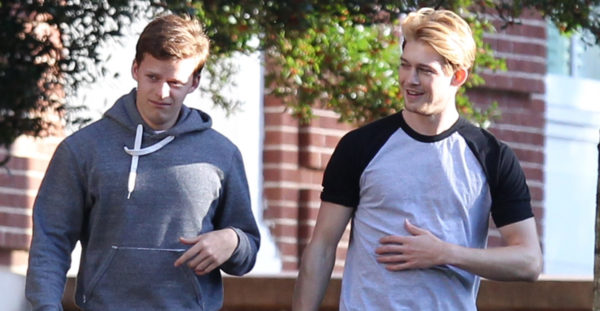

Edgerton tells the disturbing, compelling story of evangelical homophobia with candor, courage clarity and restraint, while still managing to check off all the boxes on the subject of outsiders, religious zealotry, family values, homophobia, hypocrisy and unconditional love.
The lead character, 18-year-old Jared, is played by Lucas Hedges (of “Manchester by the Sea”) who gives a perfectly pitched, understated, Oscar-worthy performance. His father, a pastor and car salesman is Russell Crowe, who, according to Edgerton, in appearance only is the doppelganger of Conley’s clueless, albeit ultimately well-meaning dad. A bewigged Nicole Kidman has a star turn as Jared’s mother. Together the trio elevates what might otherwise be cliched interactions in the context of anti-gay bigotry to poignant highs. And as the leader of the Love in Action facility, another variation on the theme of family, however perverse, Edgerton delivers the goods as both monster and mentor – and ultimate hypocrite.
Easily one of the most devastating and affecting family dramas screened in Telluride is Academy Award-winning director Ed Zwick’s “Trial by Fire.” The movie tells the awful but true story of Cameron Todd Willingham, a Texas man wrongfully put to death for the arson murder of his three little girls just two days before Christmas – a twist of fate, (along with the character’s pentagram tattoo), that made the accusations seem all the more sinister and damning.
The script by Geoffrey Fletcher is an adaptation of the heart-wrenching story about a miscarriage of justice written by David Grann for for The New Yorker, an assignment which he claims turned him into a crusader against the death penalty and social injustice in general.
Laura Dern as Elizabeth Gilbert, the woman who desperately campaigned to save Willingham’s life, and Jack O’Connell, as the man condemned by society and a flawed justice system, deliver believable, heartfelt performances.
The south-of-the-border epic “Birds of Passage” charts the origins of the Colombian drug trade, through the epic story of the indigenous Wayuu family that becomes involved in the booming business of selling marijuana to American youth in the 1970s. When greed, passion and honor collide, a fratricidal war breaks out that will put their lives, their culture and their ancestral traditions at stake.
When introducing “Birds of Passage,” easily one of the most touted Festival features this year, Ciro Guerra and his wife, director Christina Gallego, told a rapt audience at Telluride’s Le Pierre that most accounts about the rise of the Colombian drug trade just before Escobar comes to power were written by outsiders or alijunas, stories like “Narcos” and “Loving Pablo.” But as natives themselves, their “Birds” is the true, heretofore largely undocumented account of what happened when indigenous tribes in the northern part of the country started trafficking marijuana – led, in this fictionalized account by a woman, Ursula Pushaina, who announced: “Do you know why I am respected? Because I am capable of anything for my family and clan.” (The Wayuu became the directors’ meta for those tribes, all of whom lived in a resource-rich desert region but did not benefit from the local mining and commercial interests.)

Directing “Birds of Passage”
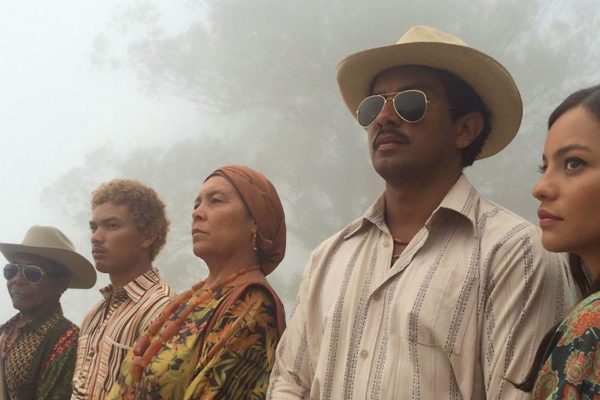
“…composed as five discrete chapters over the devastating two-decade stretch between the 1960s and ’80s — a period known as “la Bonanza Marimbera” when narco trafficking thrived in the region — “Birds of Passage” holds its own as a mythic addition to a seemingly boundless canon of drug-trafficking tales, fueled by violence, avarice and the constant threat of bloody reprisal. This epic tragedy begins from a place of naive innocence and builds to a full-blown war between two rival factions, and yet, Gallego and Guerra construct the film with such a deep interest in and respect for the indigenous culture that the drug element is but the window through which they view this endangered way of life.
“Marijuana may as well be a metaphor for any outside influence on such an enclave, as the filmmakers use the high-stakes business to demonstrate how modern temptations of all kinds threaten to pull the Pushaina clan away from their ancient, honor-driven system of customs and rituals. Few films have captured quite so powerfully the tension between the old and new worlds — a feat “Birds of Passage” accomplishes while simultaneously allowing audiences to channel the Wayuus’ surrealistic view of their surroundings, where spirits walk the earth, and wise women interpret their dreams,” wrote Peter DeBruge for Variety.
Much more upbeat and way less conventional is the family of climbers and filmmakers that surround Alex Honnold, whose free solo climb of El Capitan is the subject of “Free Solo,” one of the most popular docs at this year’s festival. At 31, Honnold became the only human to ever scale the rock wall that rises 3,000 feet out of the Yosemite Valley – without ropes. Is he of sound mind? One of the most interesting (and few adrenaline-free) moments of the film is when the climber agrees to a brain scan. Turns out Honnold’s amygdala, the part of our limbic (reptilian) brain that explains why we fear things outside our control, is way under-active.
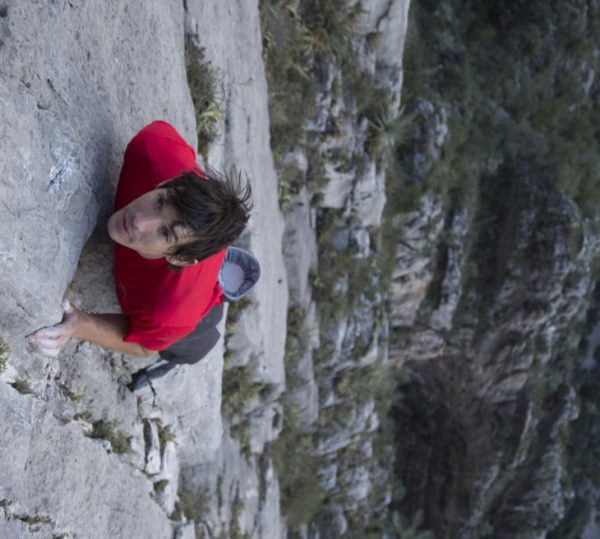
Lovingly directed by Elizabeth Chai Vasarhelyi and Jimmy Chin (who also directed the popular “Meru,” which features similar terrain), “Free Solo” is a character study of an extraordinary human who marches to a different drum. Honnold is man who can love, but his love interest (Sanni, who also features prominently in the story) is not his numero uno priority. And Honnold thinks of death like most of us would a sprained ankle. No fun, but hey, shit happens.
The uplifting doc brought the audience at the Galaxy to its feet. Guess we need heroes to look up to. In Honnold’s case, way up.
At age 76, when most self-respecting rascals would have retired, Forrest Tucker makes an audacious escape from San Quentin, then conducts an unprecedented string of heists that confounds authorities and enchants the public. Wrapped up in the pursuit are detective John Hunt, who becomes captivated with Forrest’s commitment to his craft, and a woman who loves him in spite of his chosen profession.
That is the story of “The Old Man and the Gun,”written in 2003 by David Grann (who also wrote The New Yorker article upon which “Trial by Fire” was based) and lovingly directed by David Lowery and filmed in downtown Dayton. The film stars Robert Redford as Tucker. Redford, an effortless charmer, has said it would be his last project – then added an aside to the packed house of patrons and press at the Werner Herzog Theatre on opening day: “But you never know.”
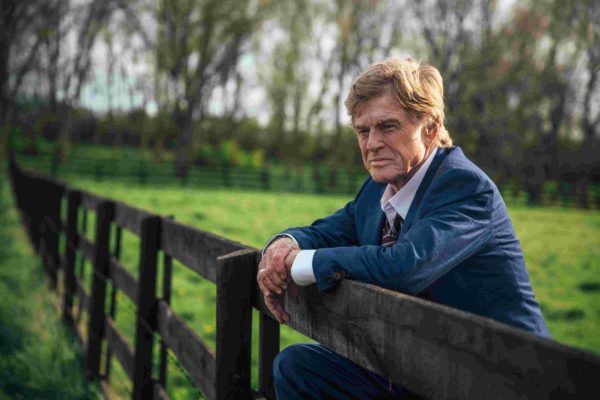
Like Redford, the real-life stick ’em up guy was kind of hot. In his New Yorker piece, Grann described Tucker as “a striking-looking man with intense blue eyes and swept-back white hair.” Who charmed the pants off his victims. Just like Redford does, twinkle in his eye, wry smile on his still-handsome face.
But Redford does not do it alone. His “family,” aka the Over-the-Hill Gang, includes Danny Glover as Teddy and Tom Waits as Walter, whose Why I Hate Christmas story brought down the house.
Sissy Spacek is pitch perfect (and, as a mature woman, prettier than ever) as Redford’s love interest.
(Footnote: Spacek performed opposite Mel Gibson in “Love Letters” in the early 1990s on the stage of Telluride’s historic Sheridan Opera House. She did the phone interview for the story while she was ironing shirts. At least that is what she told me.)
Casey Affleck charms as Detective Hunt, who ultimately falls under Tucker’s spell.
To the folks who claim “Old Man” is too slow, I say that is because Forrest Tucker did it his way: like the turtle, not the hare. So let the pace fit the crime – rather, the dazzling criminal. Why hurry if you are still having fun? For my, err, money, the “Sundance Kid,” now 82, still has his mojo working.
When it comes to a dysfunctional family, it would be hard to beat the relationship detective Erin Bell has with her daughter and her former lover, the man who assumed the role of kid’s father. In the “Destroyer,” a classic film noir directed by Karyn Kusama, Nicole Kidman, one of the most recognized celebs on the planet, is virtually unrecognizable. Playing the burnt-out LAPD detective and anti-hero, the actress looks Zombie-like with shaggy brown hair, dark circles and bags under her eyes, and mottled skin. It is a bravura performance from this chameleon of an actress and a surefire Oscar nod.

Yes, it’s Nicole Kidman
As the story goes, when Bell was younger, she got entangled in a sting operation, embedding herself in a gang, a whole other kind of family. They lived together in the California desert, until things went south. The movie picks up years later, when Bell is confronted by the leader of the gang. “She must work her way back through the remaining members and into her own history with them to finally reckon with the demons that destroyed her past,” the film’s summary teases.
And – spoiler alert – she does.
But the how of it all involves piecing together a jigsaw puzzle which involves circular time.
Harrowing, but also lots of good, dark fun.
As family dramas go, director Paweł Pawlikowski’s lush dramatic tragedy, “Cold War,” takes the cake. Turns out that like the other black and white marvel of a movie,”Roma,””Cold War” has autobiographical elements, namely, two: the screenplay is based on the relationship between the director’s mother and father.
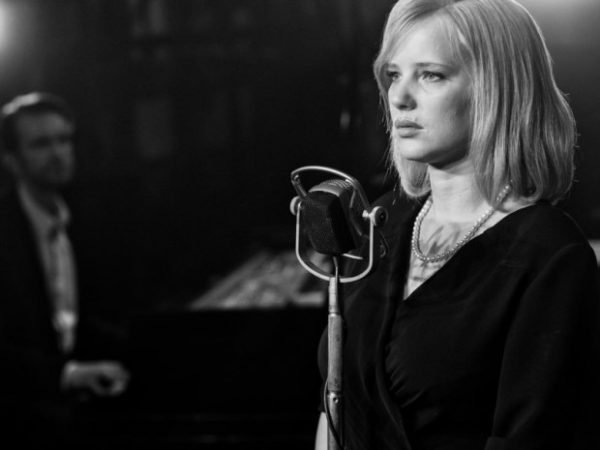
“Cold War” opens in rural Poland, 1949, where Wiktor (Tomasz Kot and Pawlikowski’s father’s real name) and Irena (Agata Kulesza, ditto, his mother) are recording folk songs, mournful tales of love, drink and hardship. Under the banner of the “Mazurek ensemble” (inspired by the real-life Mazowsze troupe), they audition musicians and dancers to showcase the authentic sounds of Poland, ensuring that “No more will the art of the people go to waste!”
Enter Zula (the beautiful and beguiling Joanna Kulig, her face reminiscent of Liv Ullman), an enigmatic young woman posing as a village girl who performs a song learned from a Russian movie rather than a Polish ditty. Irena, Wiktor’s wife, detects a con,” but Wiktor is smitten by Zula, who is whispered to have killed her father (“He mistook me for my mother, so I used a knife to show him the difference”). Soon Zula becomes a star of Mazurek, unfazed by the bureaucrats’ demands that the ensemble sing the praises of Stalin and agricultural reform. When Wiktor spies a chance to defect during a 1952 engagement in East Berlin, he begs Zula to come with him. Her reluctance sets off a chain of events that lead to the inevitably devastating conclusion, a remix of Eugene O”Neill’s “life is a long drawn out lie with a sniffling sigh at the end of it.”
Suffice to say, we stopped breathing.
In “White Crow,” director Ralph Fiennes captures the raw physicality and brilliance of Rudolf Nureyev, whose mother, a poor peasant woman, spotted her son’s Otherness and talent when he was a boy and enrolled him in a dance school. The film, which focuses on the iconic dancer’s early years, culminates in Nureyev’s most dramatic leap of all: his escape to freedom in the West at Paris’ Le Bourget airport, which stunned the world at the height of the Cold War.
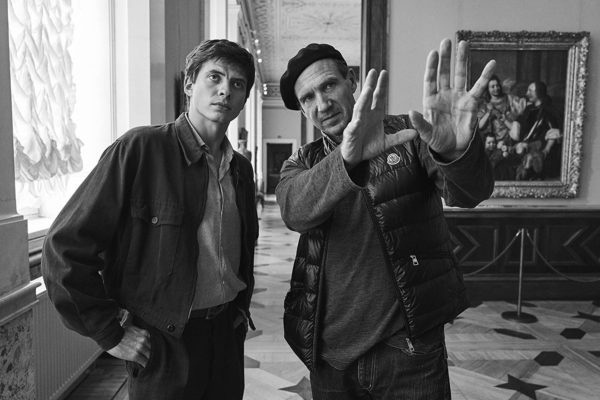
A magnetic presence, Nureyev emerged as ballet’s most famous star, a wild, beautiful, if not technically perfect dancer, who felt stifled by the world of 1950s Leningrad. His flirtation with Western artists and ideas led the dancer into a high-stakes game of cat and mouse with the KGB.
Nureyev is played by world-class ballet performer Oleg Ivenko who, when asked if he knew Nureyev, answered in the affirmative, but added, “he’s old school.” That said, Ivenko, a non-actor trained by Fiennes to deliver the goods, admitted to studying whatever he could get his hands on: videos, articles, etc., even conversed with Nureyev’s old friends.
Fiennes told his audience at Le Pierre that his instruction to Ivenko was ‘Don’t show it, be it, feel it.”
What Fiennes was after was “an explosion of character.”
Which is exactly what he got.
David Hare’s drum-tight script offers a thrilling insight into Nureyev’s dangerous defection, masterminded by the dancer’s great friend, 21-year-old Parisian Clara Saint (Adele Exarchopoulos), who became Nureyev’s family once he left Russia, as did the Pushkins, who tutored and housed the ambitious young man.
As an aside, a friend pointed out Alex Hommold and Nureyev are like two peas in a pod: extravagantly talented, utterly focused and completely selfish, perhaps of necessity.
More:
Early 18th century. England is at war with the French. Nevertheless, duck racing, pineapple eating and throwing tomatoes at naked men in wigs are thriving preoccupations. A frail, sick, gout-afflicted Queen Anne, the last of the Stuarts, occupies the throne, but it is her close friend, the Duchess of Marlborough, aka Sarah Churchill, who is much prettier, much smarter and way more strategic, who governs the country, while tending to Anne’s ill health, mercurial temper – and her insatiable erotic appetite. When a new servant Abigail Masham arrives, her charm endears her to Sarah, who takes Abigail under her wing. And the servant, a former lady, sees a chance at a return to her aristocratic roots. As the politics of war demand Sarah’s full attention, Abigail happily fills in as the Queen’s companion and rabbit wrangler. Their burgeoning friendship gives the woman a chance to realize her ambitions and she will not let woman, man, politics – or pet rabbits, the Queen’s “babies” – get in her way.

And so goes the over-the-top, wickedly funny, titillating comedy drama, “The Favourite,” directed by Yorgos Lanthimos and starring Olivia Colman as the loopy Queen Anne. Her bravura performance, definitely Oscar-worthy, is nearly matched by her co-stars, Rachel Weisz as the hot brainiac with ice running through her veins and Film Fest tributee Emma Stone as Abigail, who captures hearts and minds as the innocent we first meet, but proves to be a worthy (read nimble) adversary to her rival, Lady Sarah.
Wolves running – in the Queen’s case, hobbling – around in sheeps’ clothing.
Game on ladies.
Huntsinger described the film in her usual understated fashion as “cheeky fun.”
Of Colman, Laura Dern was overheard gushing: “That was one of the best performances I’ve ever seen on the screen.”
In his riveting portrait of a tragic figure, one of the 20th century’s most defining politicians, we see the prolific director and history buff Werner Herzog holding candid conversations with the former head of state Gorbachev, three interviews over a six-month period that are the foundation for this riveting film, co-directed by André Singer: “Meeting Gorbachev.”

In a career that spans 50 years of filmmaking, Herzog has scarcely engaged with a politician so directly. He clearly admires Gorbachev for being the kind of world leader that’s in short supply today, known for his grace, wisdom, and commitment to world peace.
Now 87, Gorbachev speaks on screen like a man with nothing left to lose. The man is clearly respected more outside Russia than inside, where he’s blamed for the break up of the Soviet Union in 1991.
The discussion that followed the screening was as riveting as the doc itself. It featured Herzog and Gorbachev’s brilliant biographer, Dr. William Taubman who, with his wife Jane, also a Russian scholar, conducted a series of interviews with the statesman, spoke with aides and adversaries and poured over transcripts, all of which resulted in “Gorbachev: His Life and Times,” described by The New York Times Book Review as “essential reading for the twenty-first century.”
In closing:
In an ad hoc interview with Ken Burns about this year’s Festival, the documentary filmmaker, historian, cultural icon and long-time advisor (to the Festival), paraphrased Richard Powers: “The best argument in the world can’t change a single mind. The only thing that can do that is a good story,” adding,“good stories explain why when people visit one of the most beautiful places in America, they willingly sequester themselves in dark rooms hour after hour, day after day.”
Over Labor Day weekend, lots of great stories got told. Many we missed: “First Man,” “Border,” “Ghost Fleet” and “Watergate” among them. But the buzz about the weekend suggests an exciting fall season with films out of Telluride that hit that elusive sweet spot dead center, the place where intelligent storytelling, superior filmmaking and escapist entertainment fuse into something resembling a classic that just might lend a refreshing perspective on the world.
.


Dudley Sharp
Posted at 02:17h, 09 SeptemberTrial By Fire is even more misleading than the article it is based upon.
Fact check/vet next time.
admin
Posted at 16:17h, 19 SeptemberDo you have specific issues with the story and/or the film? We have talked to a number of people with knowledge of the case and the consensus seems to be the film was essentially accurate. In addition it seems the governor chose to remain ignorant of the information presented well before the date of the execution, information that should have at least warranted review of the case.